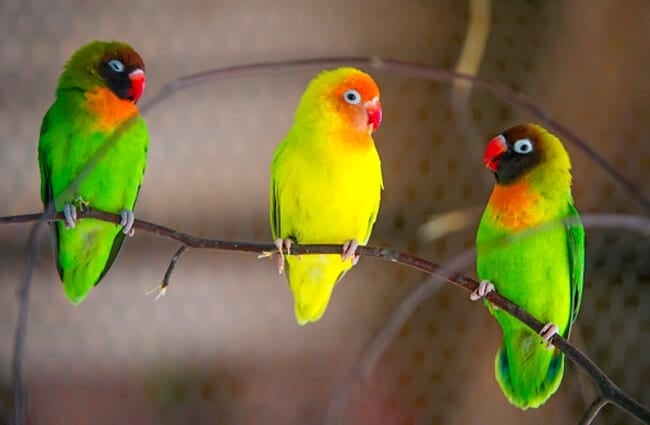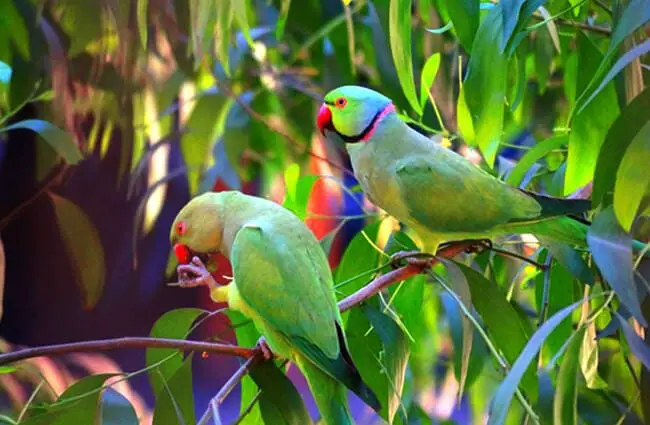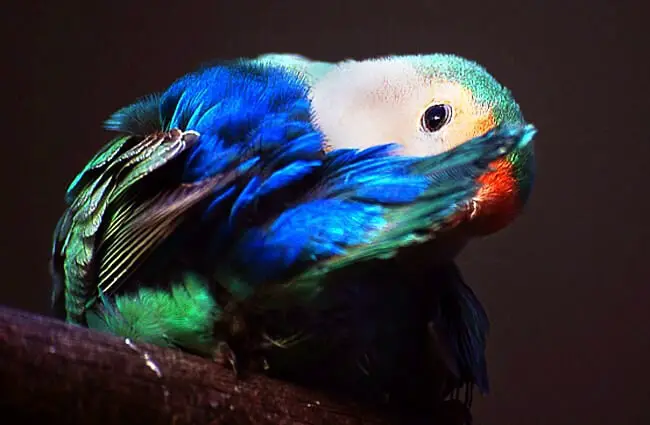A Comprehensive Guide to Lovebirds
Lovebirds, aptly named for their strong pair bonds, are among the most captivating and charismatic members of the parrot family. These small, vibrantly colored birds are native to Africa, and their playful personalities and affectionate nature have made them popular companions for decades. Beyond their charm, lovebirds possess a fascinating natural history, complex social behaviors, and play a vital role in their native ecosystems. This guide delves into the world of lovebirds, exploring their biology, behavior, and conservation, catering to both the casual enthusiast and the aspiring ornithologist.

Understanding Lovebird Biology
Physical Characteristics
Lovebirds are relatively small parrots, typically measuring between 13 and 16 centimeters in length. Their compact size belies a robust build. They exhibit striking plumage, varying significantly among the eight recognized species. Common colors include vibrant greens, blues, yellows, and peaches, often with contrasting facial markings. The beak is strong and curved, perfectly adapted for cracking seeds and nuts. A key characteristic is their relatively short, blunt tail, distinguishing them from many other parrot species.
Species Diversity
Eight distinct species of lovebirds are recognized, each with unique characteristics and geographical distribution. These include the Peach‑faced Lovebird, Fischer’s Lovebird, Masked Lovebird, Rosy‑faced Lovebird, Black‑masked Lovebird, Red‑faced Lovebird, Yellow‑collared Lovebird, and the Grey‑headed Lovebird. Subtle differences in plumage, size, and vocalizations help ornithologists differentiate between them. The Peach‑faced Lovebird is among the most common species found in captivity, known for its gentle temperament and predominantly green plumage with a peach‑colored face.

Lovebird Habitat and Distribution
Lovebirds are exclusively African birds, inhabiting a range of environments from woodlands and savannas to open farmlands. Each species has a specific geographic range. For instance, the Rosy‑faced Lovebird is found in southwestern Africa, while Fischer’s Lovebird is native to Tanzania. They prefer areas with access to fresh water and abundant seed‑bearing plants. These birds typically form small flocks, often foraging and roosting together. They are adaptable, but their populations can be threatened by habitat loss and agricultural expansion.
Diet and Foraging Behavior
In the wild, lovebirds are primarily granivores, meaning their diet consists mainly of seeds. They also supplement their diet with fruits, berries, and occasionally flowers. Their strong beaks are well suited for cracking tough seed shells. They are often observed foraging in flocks, searching for food on the ground or feeding in trees. In captivity, a balanced diet for lovebirds should include a high‑quality seed mix, fresh fruits and vegetables, and formulated pellets designed for parrots. Providing a variety of foods ensures they receive all the necessary nutrients.

Lovebird Behavior and Social Dynamics
Pair Bonding and Mating
The name “lovebird” originates from the incredibly strong pair bonds these birds form. Once a pair bond is established, it typically lasts for life. They exhibit affectionate behaviors such as mutual preening, feeding, and roosting closely together. The mating process involves elaborate courtship displays, including vocalizations, head‑bobbing, and wing‑flapping. Lovebirds nest in cavities in trees or rock crevices, lining the nest with plant material. The female typically lays 3‑6 eggs, which are incubated by both parents. Chicks are altricial, meaning they are born helpless and require extensive parental care.
Communication and Vocalizations
Lovebirds are highly vocal birds, using a variety of calls and squawks to communicate with each other. These vocalizations are used for everything from coordinating foraging activities to warning of predators. They are also capable of mimicking sounds, though their vocal abilities are not as refined as some other parrot species. The intensity and frequency of their vocalizations often increase during the breeding season.

Ecological Role and Interactions
Lovebirds play an important role in their native ecosystems. As seed dispersers, they contribute to plant reproduction by carrying seeds to new locations. They also serve as a food source for predators such as birds of prey and snakes. Their foraging activities can influence plant communities. While generally peaceful, they may compete with other seed‑eating birds for resources. They sometimes forage alongside other bird species, creating mixed‑species flocks.
Lovebirds and Humans
Lovebirds as Companion Animals
Lovebirds have become popular companion animals due to their vibrant colors, playful personalities, and affectionate nature. However, they require significant commitment and specialized care. They are not suitable for everyone, as they can be loud, demanding, and require a lot of attention. Potential owners should be prepared to provide a spacious cage, a stimulating environment, and plenty of social interaction.
Conservation Status and Threats
While some lovebird species are relatively common, others are facing threats due to habitat loss, agricultural expansion, and the pet trade. The Rosy‑faced Lovebird, for example, is listed as Least Concern, but populations are declining in certain areas. Conservation efforts include protecting habitats, regulating the pet trade, and promoting sustainable agricultural practices. Supporting organizations dedicated to bird conservation can help protect these beautiful birds.

Advanced Insights for Aspiring Ornithologists and Zookeepers
Genetic Diversity and Speciation
Recent genetic studies have revealed complex relationships between lovebird species, challenging some traditional classifications. Understanding the genetic diversity within and between species is crucial for effective conservation management. Research is ongoing to determine the evolutionary history of lovebirds and the factors that led to the formation of distinct species.
Captive Care Best Practices
Zookeepers and experienced bird keepers should prioritize enrichment activities to stimulate lovebirds’ natural behaviors. This includes providing a variety of toys, foraging opportunities, and social interaction. Monitoring for signs of stress or illness is crucial. Proper nutrition, a clean environment, and regular veterinary checkups are essential for maintaining the health and well‑being of captive lovebirds. Encouraging natural nesting behavior and providing appropriate nesting materials can also enhance their welfare.

Fun Facts about Lovebirds
- Lovebirds can live for 10‑15 years in captivity, and even longer with proper care.
- They are known for their playful and mischievous personalities.
- Some lovebird species can learn to talk, though their speech is often limited.
- They are excellent climbers and enjoy exploring their surroundings.
- Lovebirds are highly social and thrive on interaction with their owners or other birds.
- They are capable of performing simple tricks and learning new behaviors.
- Lovebirds require regular nail trimming and wing clipping to prevent injuries.

Conclusion
Lovebirds are remarkable creatures, captivating us with their beauty, intelligence, and affectionate nature. From their complex social behaviors to their vital role in African ecosystems, these birds offer a wealth of scientific and cultural significance. By understanding their biology, behavior, and conservation needs, we can ensure their survival for generations to come. Whether you’re a seasoned ornithologist, a passionate animal lover, or simply curious about the natural world, the world of lovebirds has much to offer.

![Red Angus Closeup of a beautiful Red Angus cowPhoto by: U.S. Department of Agriculture [pubic domain]https://creativecommons.org/licenses/by/2.0/](https://animals.net/wp-content/uploads/2020/03/Red-Angus-4-238x178.jpg)




![Red Angus Closeup of a beautiful Red Angus cowPhoto by: U.S. Department of Agriculture [pubic domain]https://creativecommons.org/licenses/by/2.0/](https://animals.net/wp-content/uploads/2020/03/Red-Angus-4-100x75.jpg)

